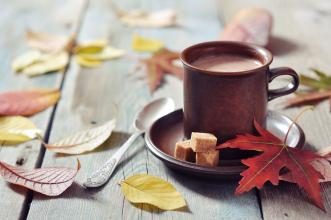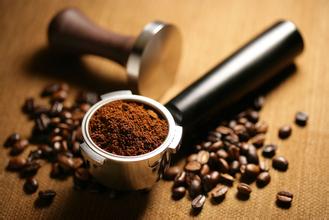Color, specification, summary and introduction of coffee beans
Coffee beans-Overview
Coffee beans
Coffee bean atlas
Small and round dark brown coffee beans, quietly emitting a fragrant fragrance in the grinder, injected into the cup showing the beautiful color of amber, these are the three very deep impressions of coffee.
As you explore the history and beauty of coffee, you can also see the coffee trees that are caressed by the tropical sun and whose leaves twinkle. It has a small white flower similar to jasmine, its fruit from green to yellow-green, and finally to red, coffee beans are the seeds in its fruit.
Moreover, if you go to the coffee bean refinery, you will surely see the red pulp called coffee cherry and the fresh and green coffee raw beans with the endocarp and silver skin removed. These are the coffee beans for export.
At present, there are about 60 coffee-producing countries, most of which are located in areas with an elevation of 300 to 400 meters, and sometimes coffee trees are cultivated on highlands with elevations of 2000 to 2500 meters, but those planted on slopes above 1500 meters above sea level are said to be of better quality.
The most suitable conditions for the cultivation of coffee trees are areas with an average annual rainfall of 1500-2000 mm and an average temperature of about 20 degrees.
Coffee is an evergreen plant of the Akanaceae family. If it is wild, it can even grow to more than eight meters. However, in the farm, the height is cut to about two meters to ensure the quality of coffee beans and facilitate management.
At present, the main tree species planted are Arabica species, Robusta species (Carneva species) and Liberika species. It can be subdivided into dozens of varieties, which will be distinguished in production, circulation and trading.
Even in the same producing country, it will have a subtle influence on the flavor and quality of coffee beans and produce their own characteristics because of the differences in climate, altitude and soil quality in different regions. Therefore, according to the variety, origin, brand, there will be different attributes; therefore, it is impossible to describe the characteristics of a country's coffee beans in one sentence!
Coffee beans-specifications
Coffee beans
Washed coffee beans
a. Washing / non-washing
Washing type: in the sink, after rubbing with water and utensils, the pulp and colloid are removed and dried, which is called washing coffee bean with uniform quality.
Non-washing type: after the sun is naturally dried, the pulp and peel is removed by a sheller, and its quality is unstable.
b. Flat beans / round beans
The fruit of coffee consists of two oval seeds opposite each other. The connecting side of each other is a flat joint, which is called flat bean. But there is also a round seed called a round bean, which tastes no different. Ripe and red coffee cherries have multiple structures. In the middle is the predecessor of the coffee bean, the light green seed.
Generally speaking, the fruit of coffee is made up of two oval seeds opposite each other. The side that connects with each other is a flat joint, so it is called flat bean. But some are made up of a round seed, and its taste is no different.
c. The size of coffee beans
Filter number (mesh no.)
Flat bean
20-19 large, 18 large, 17 quasi-large, 16 ordinary, 15 medium, 14 small, 13-12 extra-small
Round bean
13-12 big, 11 quasi-big, 10 normal, 9 medium, 8 small
d. Altitude
According to the elevation of the cultivated land, it can be divided into three, four, seven and other grades. Generally speaking, the quality of highland beans is better than that of lowland beans, and the price is higher because of the increase in freight.
Grade name elevation (m)
1 special grade beans 1.500 ~, 2 high grade beans 1.200 × 1.500, 3 medium beans 1.000 × 1.200, 4 grade water washed beans 900 × 1.000, 5 grade water washed beans 760 × 900, 6 special grade water washed beans 610 × 760, 7 excellent water washed beans ~ 610
e. Quality
According to the statistical method, the type and quantity of dopants contained in a certain amount of samples are converted into percentage "defect number", and the basis for determining the quality class is that the smaller the defect number is, the higher the quality is.
f. Taste
Brazil, Haiti, Kenya, say and other countries all have their own taste testing methods, which can be exported only after taste testing.
From harvest to shipment
Coffee beans
Coffee bean atlas
After the fruit is harvested, the outer skin, pulp, endocarp and silver skin should be removed before shipping. There are two kinds of methods: drying (also known as natural or non-washing) and washing. The drying method is relatively simple.
First of all, spread the freshly harvested fruit on the exposure field for a week or two until the fruit crackles and dries naturally.
After that, the dried pulp, endocarp and silver peel are removed by a sheller.
Coffee beans refined in this way are slightly sour and slightly bitter. Almost all coffee beans produced in Brazil, Ethiopia, Yemen and other places are obtained in this way. The disadvantage of this method is that it is easily affected by weather and is easy to be mixed with defective beans and other impurities. Therefore, it must be carefully screened.
Another way is to wash the fruit, in which the fruit to be harvested is put into a flowing trough. After the floating fruit is removed, the skin and flesh are removed by a pulp remover. Then put it in the sink to remove the emerging pulp. After that, move into the fermentation tank, soak for half a day to a day, and then dissolve the gum on the surface of the fermented coffee beans. After washing with water, drying it for a few days, drying it with a machine, and finally using a sheller to remove the endocarp to become a commercial raw coffee bean.
Water-washed coffee beans have more beautiful color and less impurities. Colombia, Mexico, Guatemala and other countries adopt this method for about 70% of their output.
Sometimes in the fermentation process, if not handled properly, it may give off fermentation odor and its unique sour taste, but if handled properly, all kinds of beans can give off their unique coffee aroma.
In order to be delivered completely to the destination, raw coffee beans are packed in sacks and placed in special containers for long-distance merchant shipping trips.
Coffee beans-Color
Coffee beans
An atlas of high quality coffee beans
The color of coffee beans is dark and light. Do you know what it means? A few days ago, at Starbucks'"espresso expert activity", brown fans finally got the hang of it.
Coffee beans range in color from grass green to yellowish orange, light jade cinnamon to dark brown, the most ideal of which is dark brown. Because the longer the high-quality coffee beans are roasted, the more natural volatile oil will be produced and will emerge from the surface, giving off a refreshing aroma, but the weight will also be reduced, which is why many coffee shops choose light roasting. Starbucks espresso roasted coffee, Italian roasted coffee and French roasted coffee use dark brown coffee beans. Through deep roasting, the coffee beans burst, the volume doubled, and the weight was reduced by nearly 1 inch 4. In the process of roasting, coffee beans gradually produce volatile flavor oil, so that various flavors can reach a perfect balance.
Coffee beans are roasted well, and the brewing method is also very important. Espresso is ideal for heavy-flavored deep-roasted coffee beans. It is made by pouring hot water into finely ground coffee beans and boiled under fine ground coffee and pressure rather than gravity. High pressure will completely emulsify the lipids inside the coffee and dissolve it into water, which is the main source of mellow flavor. At the same time, emulsification will make espresso taste thicker, making people drink like velvet, and stickiness will form a lower surface tension, which can invade the taste buds and make mellow reverberate in the mouth. If you want to taste the taste of espresso, it's best to try a rich vanilla latte with espresso as the core.

Important Notice :
前街咖啡 FrontStreet Coffee has moved to new addredd:
FrontStreet Coffee Address: 315,Donghua East Road,GuangZhou
Tel:020 38364473
- Prev

Introduction to the Coffee Industry in Costa Rica
Costa Rica's coffee industry, originally controlled by the Costa Rican Coffee Industry Company (InstitutodelCafdeCostaRica, ICAFE), has been taken over by the official Coffee Committee (OficinadelCaf). Among the exported coffee, those products that are considered to be of substandard quality are colored with blue vegetable dyes and then transferred back to China for sale. Coffee consumed at home
- Next

Powder pressing skill of powder press & #160; kg; fine coffee
General bias powder hammer manufacturers will be in 58mm, on the one hand, to facilitate production, on the other hand, the cost will be relatively low. If you ask for a more accurate size, the cost and technology will also increase, so the price will vary from dozens of yuan to 300 yuan. The powder hammer will also increase with the company brand, type of powder hammer, material, weight, design or limited edition and other influencing factors. All right, pass.
Related
- Guji coffee producing area of Guji, Ethiopia: Humbela, Shakiso, Wulaga
- What is the most expensive variety of Qiloso in BOP multi-variety group?
- How to store the coffee beans bought home?
- Why are Yemeni coffee beans so rare now?
- Ethiopian Sidamo all Red Fruit Sun Sun Santa Vini Coffee beans
- SOE is mostly sour? What does it mean? Is it a single bean? what's the difference between it and Italian blending?
- Is Italian coffee beans suitable for making hand-brewed coffee?
- How to choose coffee beans when making cold coffee? What kind of coffee beans are suitable for making cold coffee?
- Just entered the pit to make coffee, what kind of coffee beans should be chosen?
- Can only Japan buy real Blue Mountain Coffee? What are authentic Jamaican Blue Mountain coffee beans?

